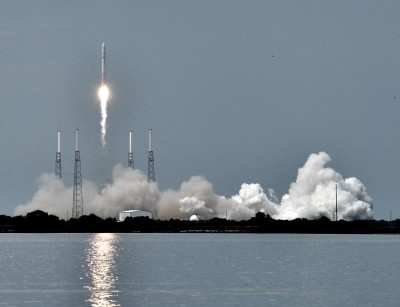Associate Administrator For Commercial Space Transportation
Addresses Orlando Conference
In a speech to the Next-Generation Suborbital Researchers
Conference held in Orlando, FL, this week, Dr. George C. Nield, the
FAA Associate Administrator For Commercial Space Transportation,
said there needs to be an honest assessment about the risk involved
in commercial spaceflight. But he added that should not deter
private companies from moving forward in their efforts.

"Spaceflight is inherently risky," Dr. Nield said. "We all know
that. Even Congress has acknowledged as much in the Commercial
Space Launch Amendments Act of 2004. The environment is
unforgiving. And most of the systems that have been built to travel
to space are operating at the very limits of their capability.
"Now it’s true that NASA has many extremely smart,
capable, and hard-working employees: managers, engineers,
technicians and others. But two of NASA’s 132 Space Shuttle
missions have ended in tragedy. That’s a fatal accident rate
of 1 in 66 flights, which is pretty darn high. As a point of
comparison, the fatal accident rate for commercial airliners is
more than 10,000 times safer, on the order of one in every million
flights."

Nield said that does not mean that NASA is operating a dangerous
program, "(b)ut we do need to be cautious about enshrining our
current way of doing business as the only acceptable approach. To
imply that only NASA is capable of safely flying people to space,
or that American industry isn’t capable of doing the job
equally well, if not better, is not only unfair, it’s just
flat-out wrong."
Nield said that he is excited about CCDev, which represents a
public-private partnership between NASA and commercial space flight
developers. " (I)f Congress provides sufficient funding, we may
soon be able to reap the benefits of competition, with multiple
companies using different boosters and a variety of spacecraft to
demonstrate the capability to take our astronauts to orbit," he
said. "It’s going to be fantastic. No more single-string
access to space. And no more sitting on the ground for years after
an accident."

And on the subject of accidents, he suggested that the NTSB
should be the lead agency on their investigations. "With all due
respect, the last thing we need after the next spaceflight
accident, and trust me, there will be one, is a Presidential
commission and more congressional hearings," Nield said.
"Let’s get the NTSB in there to figure out what went wrong,
fix it, and get back to flying. And if one launch system has a
problem, let’s use another one, also made in America, while
the necessary repairs or modifications are being implemented."
Dr. Nield said he is excited about the prospects for commercial
space exploration. "It seems to me that the only way to eliminate
all risk in human spaceflight is not to launch at all," he said.
"I’ve heard people say that once the Shuttle is retired, we
should not allow our astronauts to fly on any of the new rockets
industry is developing until NASA is convinced that they are safe.
If that’s the attitude we have, and if those are the words we
are using to describe our goals to the public, the media, and the
Congress, I think we are setting ourselves up for failure. There
have only been a handful of different human spacecraft ever built.
And only about 500 people have had the opportunity to experience
spaceflight first-hand. After 50 years! That," Nield said, "is
really sad!
 ANN's Daily Aero-Term (04.26.24): DETRESFA (Distress Phrase)
ANN's Daily Aero-Term (04.26.24): DETRESFA (Distress Phrase) ANN's Daily Aero-Linx (04.26.24)
ANN's Daily Aero-Linx (04.26.24) Airborne 04.22.24: Rotor X Worsens, Airport Fees 4 FNB?, USMC Drone Pilot
Airborne 04.22.24: Rotor X Worsens, Airport Fees 4 FNB?, USMC Drone Pilot Airborne 04.24.24: INTEGRAL E, Elixir USA, M700 RVSM
Airborne 04.24.24: INTEGRAL E, Elixir USA, M700 RVSM Airborne-NextGen 04.23.24: UAVOS UVH 170, magni650 Engine, World eVTOL Directory
Airborne-NextGen 04.23.24: UAVOS UVH 170, magni650 Engine, World eVTOL Directory





